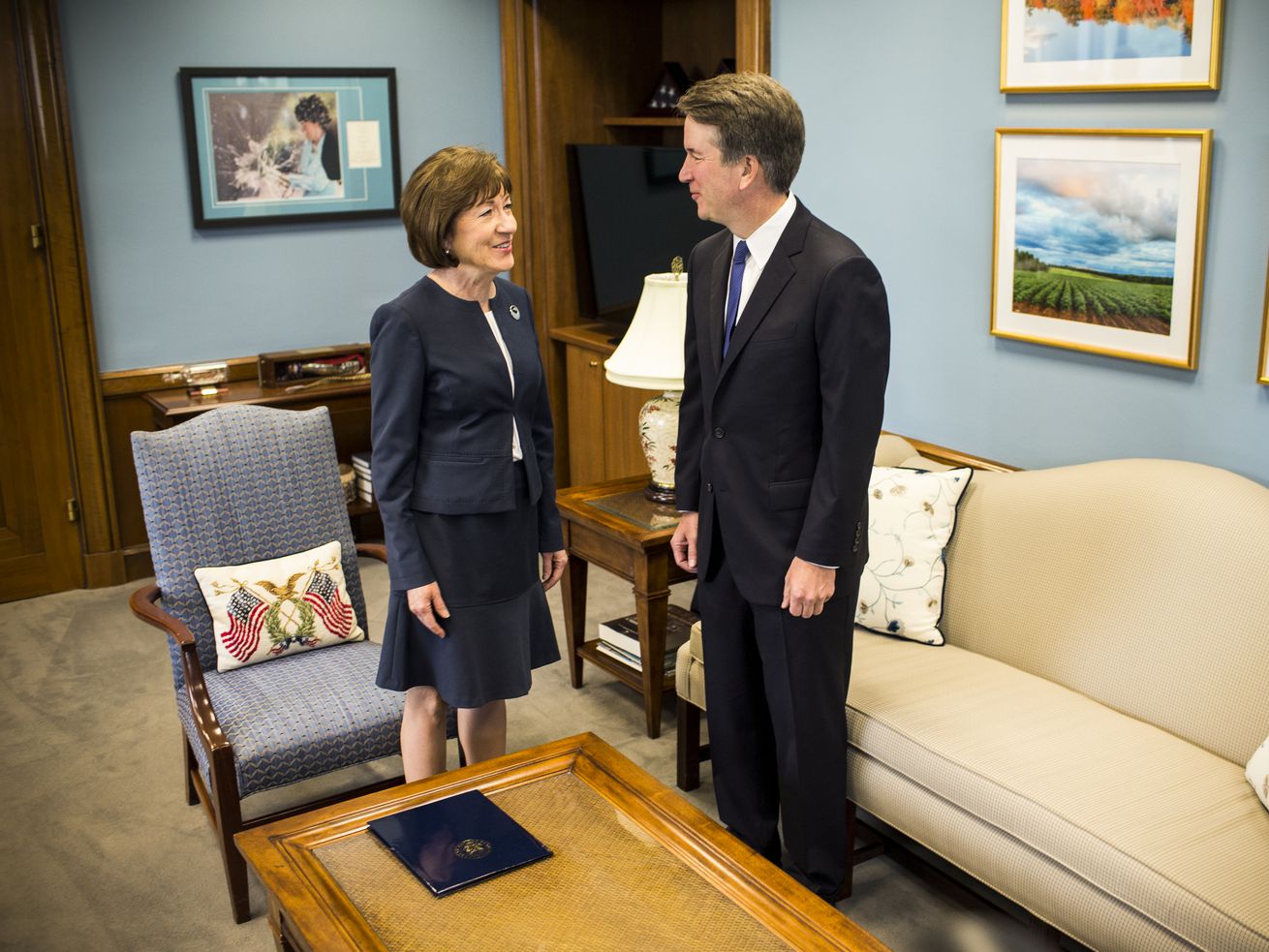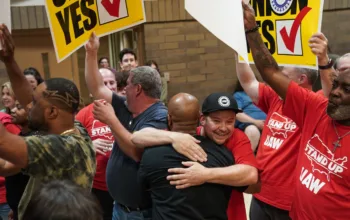For decades, abortion opponents urged the Court to lie about abortion restrictions. They don’t need to anymore.
The state of Mississippi begins its brief in Dobbs v. Jackson Women’s Health Organization with a bold claim: The case for overruling Roe v. Wade (1973) and Planned Parenthood v. Casey (1992), two seminal Supreme Court decisions protecting the right to an abortion, is “overwhelming.”
Dobbs, which the Court will hear this fall, concerns a Mississippi law that prohibits nearly all abortions after 15 weeks of pregnancy. It’s the first major abortion case to receive a full briefing and oral argument since Justice Amy Coney Barrett’s confirmation gave the Court a 6-3 conservative majority. And abortion opponents have every reason to be optimistic that the Court’s new majority will use Dobbs to undo the right to an abortion.
That probably explains why Mississippi’s brief, which argues that “the Constitution does not protect a right to abortion or limit States’ authority to restrict it,” breaks with the tactics anti-abortion lawyers have used to defend restrictions on reproductive freedom. Rather than explicitly asking the Court to overrule Roe, in the past, these lawyers tried to chip away at the abortion right until it is functionally impossible to obtain an abortion in many states.
Take, for example, Whole Woman’s Health v. Hellerstedt, the Court’s 2016 decision striking down two provisions of a Texas law that imposed expensive architectural requirements on abortion clinics, while also requiring abortion providers to obtain a difficult-to-acquire credential. The goal of this law wasn’t to explicitly ban abortion, it was to secure the Supreme Court’s permission to ban abortion indirectly — by layering so many legal burdens on top of abortion providers that they are eventually unable to comply with the law.
The law at issue in Dobbs doesn’t explicitly ban all abortions either. But Mississippi’s litigation strategy hopes to make such a ban permissible. If the Court overrules Roe and Casey, that’s the ballgame. State lawmakers will be free to ban abortion outright, and without having to dress their ban up as an attempt to regulate the width of hallways in abortion clinics.
Anti-abortion lawyers, in other words, are finally being honest about their ultimate goal. Rather than asking the Court to place some arcane and nonsensical limit on Roe and Casey, while simultaneously pretending that these two cases remain good law, Mississippi just asked the Court to eliminate the right to an abortion altogether.
Justice Anthony Kennedy turned abortion litigation into a dishonest game
Justice Anthony Kennedy, who retired from the Court in 2018, held the pivotal vote on the Supreme Court in abortion cases for many years.
Kennedy is quite conservative, and he tended to be skeptical of abortion rights. As David Cohen, a law professor at Drexel University, noted in 2013, Kennedy “has voted to strike down only one of the 21 abortion restrictions that have come before the Supreme Court since he became a justice.”
Yet, while Kennedy was open to many laws making it harder to obtain an abortion, he refused to overrule Roe outright. Kennedy was one of three co-authors of the Court’s decision in Casey, which weakened Roe, while also retaining “Roe’s essential holding” affirming “the right of the woman to choose to have an abortion before [fetal] viability and to obtain it without undue interference from the State.”
Kennedy, in other words, would not have upheld an explicit ban on abortions. But he was willing to uphold many laws burdening abortion rights. So abortion opponents spent the years when Kennedy held the balance of power on the Court drafting more and more aggressive abortion restrictions that purported to be something other than an outright ban.
The culmination of this strategy was the two provisions of the Texas law struck down in Whole Woman’s Health. That law required physicians who perform abortions to obtain admitting privileges at a nearby hospital, and it also required abortion clinics to comply with the same rules that apply to “ambulatory surgical centers,” facilities that are equipped to perform medical and surgical procedures that are far riskier and more complicated than an abortion.
Abortion-rights advocates often deride these kinds of laws as “targeted restrictions on abortion providers,” or “TRAP” laws, because they masquerade as regulations intended to make abortion safer, when their real purpose is simply to increase the cost of operating an abortion clinic and drive many clinics out of business.
As the Court explained in Whole Woman’s Health, the burdens imposed by Texas’s law did little, if anything, to actually improve health outcomes. A major reason why it is difficult for abortion providers to obtain admitting privileges at hospitals, for example, is that hospitals often require doctors to actually admit a certain number of patients in order to maintain those privileges. But abortions are so safe that they rarely result in complications that could lead to hospitalization.
As Justice Stephen Breyer wrote in Whole Woman’s Health, one clinic in Texas performed more than 17,000 abortions over a decade, and “not a single one of those patients had to be transferred to a hospital for emergency treatment, much less admitted to the hospital.”
Similarly, the Texas law required all abortion clinics to house expensive surgical facilities. But many of Texas’s abortion clinics do not even perform surgeries — they exclusively offer medication abortions where abortion is induced by pills.
It should be obvious why, if the Supreme Court had upheld the law at issue in Whole Woman’s Health, that could have been the death knell for abortion rights. If states can enact regulations whose sole purpose is to drive up the cost of performing abortions, they eventually would be able to drive all abortion clinics out of business. Perhaps Texas might have required all abortion clinics to be built out of solid gold.
And yet, even in a world of 24-karat surgical centers, the Supreme Court could have claimed that Roe and Casey remain good law. States still would be forbidden from writing a law that states explicitly that “no one may perform an abortion.” But those states would still be free to ban abortion as long as they were sufficiently dishonest about what they were up to.
It’s worth noting, moreover, that while Whole Woman’s Health was one of the most closely watched cases involving an attempt to restrict abortions through deceptive means, it was hardly a unique case. Abortion opponents both on and off the Court have proposed a raft of limits on abortion rights — ranging from limiting who is allowed to sue in order to challenge an abortion restriction to requiring each individual person who wants an abortion to file their own lawsuit in order to obtain one — that would nominally leave Roe and Casey in place while potentially rendering them unenforceable.
Yet, with Kennedy gone and Republican appointees controlling a supermajority of the seats on the Court, it’s far from clear that abortion opponents still need to engage in such subterfuge.
The Supreme Court could still decide to gut Roe in a dishonest way
Although Mississippi’s lawyers are betting that they have five votes to explicitly overrule Roe and Casey, it’s possible that the Court will fall back on the strategy advanced by abortion opponents in cases like Whole Woman’s Health. Perhaps some members of the Court’s GOP-appointed majority will fear that a decision explicitly overruling Roe will inspire more Democrats to vote in future elections. Or maybe some members of the Court want to maintain the illusion of continuity within the law.
I don’t know what the Court will do in Dobbs and neither does anyone else. But it’s important to note that, even if the Court does not take Mississippi up on its invitation to openly and honestly abolish the right to an abortion, that doesn’t mean that abortion rights are safe — or even that any vestige of them will still exist.
Indeed, while Mississippi’s lawyers devote the bulk of their brief to their argument that Roe should be overruled, they do spend a few pages at the end creating a fallback argument — that the Court should “reject any rule barring a State from prohibiting elective abortions before viability.”
Ever since Roe, the Court has held that the state may impose stricter restrictions on abortions later in pregnancy than it can early in the fetus’s development. Roe divided pregnancy up into trimesters, permitting greater regulation of abortion in the latter two-thirds of the pregnancy. Casey abandoned this framework to focus on “viability,” giving the government broader authority over abortion once a fetus can survive outside of the womb.
If the Court permits states to impose the same kind of restrictions on pre-viability abortions that those states may currently impose on post-viability abortions, that would severely hobble abortion rights and allow states to forbid most abortions — even if the Court does not explicitly overrule Roe or Casey.
The point, in other words, is that abortion rights are still in very grave danger, even if the Court pretends to keep Roe or Casey alive.
Author: Ian Millhiser
Read More



